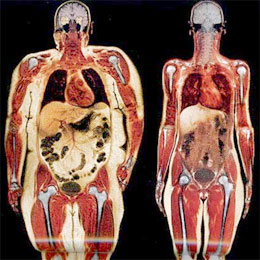THE GOOD THE BAD AND THE UGLY ON BODY FAT, AND UNDERSTANDING IT’S FUNCTIONS IN THE BODY.
Most of us will cringe at the mere mention of the word body fat, however not all body fat is bad, please read on and educate yourself on the various types of fat and their functions in our body.
There are two facts we all know about FAT and they are:
- Fat stores excess calories in a safe way so you can mobilize the fat stores when you’re hungry.
- Fat releases hormones that control metabolism.
But these are very broad facts as there are actually six different types of fat that all has various functions. The types of fat are:
- BROWN
- WHITE
- SUBCUTANEOUS
- VISCERAL
- BELLY FAT
- THIGH AND HIP FAT
BROWN FAT
Brown fat has been a bit of a buzz word in recent times as scientists have found it’s not as worthless as once thought. We now know that lean people have more brown fat than obese or overweight individuals, and that when stimulated it can burn calories. Brown fat is now thought to be more like a muscle than white fat as it burns white fat when stimulated. Scientists are currently researching how to create a drug to increase a person’s brown fat for possible future obesity treatments. Children have more brown fat than adults which helps to keep them warm. Brown fat declines as we age.
WHITE FAT
White fats role in our body is to store energy for survival and produce hormones that are then secreted into the bloodstream.
Small fat cells release a good hormone into the blood stream named adiponectin, this makes the liver and muscles sensitive to the hormone insulin, which in turn makes us less susceptible to heart disease and diabetes.
When people become overweight or obese, the production of adiponectin slows or shuts down, setting them up for disease.
SUBCUTANEOUS
Subcutaneous fat is the fat that is found directly under the skin and above the muscle. It’s the fat that is measured using skin-fold calipers to estimate your total % body fat.
In terms of health, subcutaneous fat on the hips and thighs may not be as bad, and in fact it has potential health benefits as it may not cause as many problems as other types of fat, specifically the deeper, visceral fat,.
In saying this however subcutaneous fat cells on the stomach may be another story. Research shows that the danger of big bellies lies not only in the deep visceral fat but also the subcutaneous fat.
VISCERAL FAT
Visceral fat is the deep fat which lies under the muscle, and wraps itself around the internal organs, wrecking havoc on our health. Unsure whether you have visceral fat? If you have a large waist or “beer” belly, this is a sure fire way to know you have it. Visceral fat dramatically increases your risk of heart disease, diabetes, dementia and even stroke.
Visceral fat is believed to play a larger role in insulin resistance which increases the risk of diabetes more than any other fat.
Scientists have now discovered the link between visceral fat and dementia. It is not confirmed as to why belly fat and dementia are linked, but scientists speculate that hormones such as leptin, may have some adverse effect on the brain. Leptin (released by the belly fat) not only plays a role in appetite regulation, but also in learning and memory.
BELLY FAT
With the reputation of being dangerous fat, belly fat can be made up of visceral or subcutaneous or both. A CT scan is the most accurate way of determining how much is subcutaneous and how much is visceral, however it is also very costly. As visceral fat is deep inside the abdomen and under the muscle, it will give you the appearance of a pregnant or beer belly therefore can sometimes appear hard, subcutaneous fat however will be directly under the skin and above the muscle therefore appear soft and squishy.
How much is too much. Men with a waist circumference of more than 40 inches and Women with a waist circumference of more than 35 inches are at increased disease risk.
THIGH AND HIP FAT
While men accumulate more fat in their belly region, women especially if “pear shaped” gain and store more in their hips and thighs. Abdominal fat is certainly a larger health risk than hip or thigh fat, however even though pear shape bodies do have their health benefits, this usually changes just before and during menopause when increased abdominal fat occurs.
WEIGHT LOSS AND FAT LOSS
When we lose fat from diet alone we are predominantly losing white fat however if you combine effective exercise with the correct nutrition you will lose more visceral fat from your belly increasing your overall health and longevity.

